Can I Make a Qolsys IQ Panel 2 a Secondary Z-Wave Controller?
No, you cannot make the Qolsys IQ Panel 2 a secondary Z-Wave Controller. Neither the original Qolsys IQ Panel 2, nor the Qolsys IQ Panel 2 Plus can be configured as a secondary Z-Wave Controller. This is despite the fact there is a "Controller Shift" option in Advanced Z-Wave Settings.
 The IQ Panel 2 System includes a built-in Z-Wave Plus controller for operating Z-Wave smart home devices. Any Z-Wave smart home device can be controlled from the panel itself. But the real excitement comes from getting the system monitored so that you can control paired Z-Wave devices remotely through Alarm.com. Both the Alarm.com website and mobile app are great for this.
The IQ Panel 2 System includes a built-in Z-Wave Plus controller for operating Z-Wave smart home devices. Any Z-Wave smart home device can be controlled from the panel itself. But the real excitement comes from getting the system monitored so that you can control paired Z-Wave devices remotely through Alarm.com. Both the Alarm.com website and mobile app are great for this.
But if you have an existing Z-Wave automation network in your home or office, (i.e. Samsung SmartThings, Vera, Nexia, etc.) that already works very well for you, then you might be wondering if you could somehow integrate your new Qolsys Security System into the existing automation network. Unfortunately, it's unlikely that you would be able to do this. The reason is because Qolsys did not design the IQ Panel 2, or the IQ Panel 2 Plus to operate as a secondary Z-Wave controller.
When you have two (2) individual Z-Wave hubs that you want to use on the same Z-Wave network, the typical solution is to set one hub as the primary controller, and the other as the secondary controller. When completing this process, you start by clearing all the devices from the secondary controller. Take any device you cleared, and instead enroll it with the primary controller. By the time you finish all the devices should be enrolled with the primary controller, and no devices should be paired with the secondary controller. From there, you then enroll the secondary controller itself as a device on the network of the primary controller. Once you do this, all the devices paired with the primary controller should then be "copied" over to the secondary controller so that they can be controlled from either hub, all on one big, happy Z-Wave network.
However, many Z-Wave automation hubs are unable to operate as secondary controllers. You will often find that a Z-Wave automation hub is designed so it must always be the "primary" controller. Accepting another Z-Wave hub as a secondary controller really isn't much different than accepting any other Z-Wave peripheral device for enrollment. But being able to integrate with a separate Z-Wave controller/hub as a paired device, while still maintaining the ability to control other paired devices, is a slightly more challenging task. In that scenario, the secondary controller sends all its communications for Z-Wave devices through the primary controller, which then forwards them to the various devices on the network.
When you have a truly dedicated Z-Wave hub with no other function, such as Samsung SmartThings, it makes sense that the device is built so that it must be the primary. The only reason to use Samsung SmartThings is to control an automation network. It has no other function. You did not get the device to support an existing automation network. You got the dedicated Z-Wave hub to serve as the primary and centralized controller, in which it always has authority over connected devices. Dedicated Z-Wave Controllers usually have more robust logic for items such as scenes and rules as well, so it makes sense to have them maintain primary control over the network.
But with a multifunction device like a Qolsys IQ Panel 2 or Qolsys IQ Panel 2 Plus, that isn't always the case. Sure, you may be using it as the main automation controller in your home or office. But there's also a chance that you already have a primary automation controller, and you only got the security system for its security offerings. Knowing this, you would think that Qolsys would have designed the IQ Panel 2 so that it can play nice as either a primary Z-Wave controller or as a secondary Z-Wave controller. Other manufacturers have done so, with Resideo being a fantastic example.
Resideo knew that a common scenario would involve a user bringing one of their systems, say a Honeywell Lyric Controller, into an existing automation network, in which the Lyric isn't necessarily the "star of the show". Instead, the user has already spent time and money making their dedicated smart automation controller, say the Samsung SmartThings, into a fully functioning automation hub. In other words, the Lyric is joining the party late, and it is merely serving as a supporting act, all as part of one greater automation network. Of course, if the user didn't have SmartThings, then the Lyric could still thrive in a "starring" role. In fact, it can thrive in either role (i.e. as the primary controller OR as a secondary controller). For more information on using the Lyric as a secondary controller, please see this FAQ.
Given that an IQ Panel 2 or IQ Panel 2 Plus may also be brought into that same situation, you would think that Qolsys would have made their flagship security system suitable as either a primary Z-Wave controller OR as a secondary controller. But we are sad to report that such an ideal scenario is not the case. Although menu options found in Advanced Z-Wave Settings may mislead you to an incorrect conclusion, the reality is that the Qolsys IQ Panel 2 and Qolsys IQ Panel 2 Plus Systems cannot function as secondary Z-Wave controllers. This is a surprisingly firm and rigid restriction and limitation on the automation side of the system. Qolsys recommends that other Z-Wave hubs be paired to the IQ Panel 2 or IQ Panel 2 Plus as secondary controllers. But for many stand-alone Z-Wave hubs, this option is not available.
We are beginning to see some new security system users with existing automation networks turn down the Qolsys IQ Panel 2 Plus, and instead opt for systems that function properly as secondary Z-Wave controllers. The Honeywell Lyric is a premier option in that aspect. We have many users that choose the Lyric system for that reason. Having an alarm control panel that will work as a secondary controller is becoming a rarity. Most manufacturers, both of alarm panels and of stand-alone Z-Wave hubs, are choosing not to support the secondary controller feature. Instead each is leaving it up to the other manufacturer to support this option.
Did you find this answer useful?
We offer alarm monitoring as low as $10 / month
Click Here to Learn MoreRelated Products

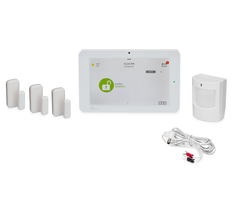
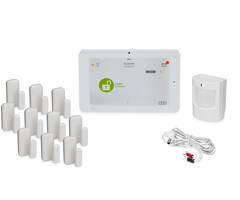
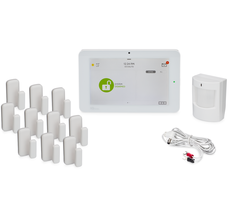
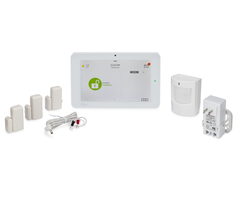

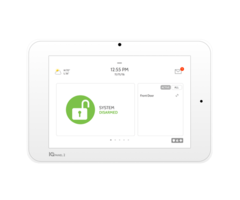

Related Categories
- Home Security Systems
- Home Security Systems
- Home Automation
- Home Automation
- Apartment Security Systems
- Small Business Security Systems
- DIY Wireless Security Systems
- Answered
